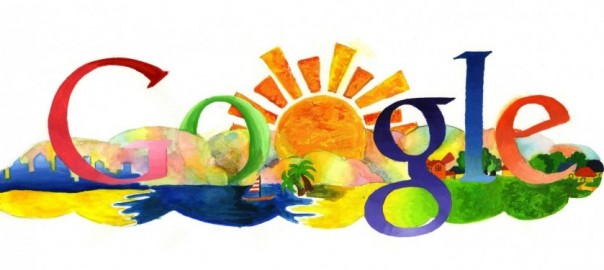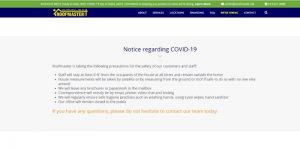Google shocked the world earlier this month when it announced that the company would be folded into an umbrella company called Alphabet.
Of course, Google will still be Google, and AdWords isn’t going anywhere, but the company’s new corporate structure lets them separate the various aspects of the business, such as its advertising products from its dystopian driverless car projects and other wacky “moonshot” ideas that are under development in the company’s secretive Google X labs. At least that’s the official story…
In honor of Google’s name change to Alphabet, we’ve put together the ABCs of PPC advertising. Whether you’re first starting out or a master, one must always remember their ABCs.

A is for AdWords, a tool we all love. It allows over 1 million advertisers to target prospects on the specific goods and services they search for on desktop, tablet, and mobile device. It knows no boundaries, allowing 198 countries to use its platform with 43 languages available for ad copy.

B is for bounce rate, a percentage between 0-100%. Landing pages use bounce rate to determine their success or failure, trying to stay below 75%. When users don’t find what they’re looking for, they bounce.

C is for conversion, a mark of a successful ad. Conversions can be a purchase, sign-up, call, form-fill, or even viewing an important page. Conversion rates in search marketing vary widely from one industry to another, but we strive to achieve at least 2% (even if Larry says we’re selling ourselves short).

D is for display, the beautiful spotlight loving cousin of AdWords, and the home of retargeting ad campaigns. We can pay by CPM (cost per thousand impressions) or we can pay by click, but we must remember the intent of the user may not be transactional, which means our bids on display need to be less than our search CPC bids.

E is for enhanced CPC, the hybrid between manual and automated bidding. It allows conversions to influence modifiers to CPCs without handing over complete control to Google.

F is for fold, and how we love to keep important information above it. Approximately 84% of the user’s attention is focused on content above the fold, or what the user can see without scrolling the mouse.

G is for Google, where the magic happens. With approximately 1.17 billion unique monthly searches with ads, it’s no wonder Google is still the boss in paid search.

H is for Headline, the first thing a user sees in your ad, and the main location you want to send them. You only have 25 characters to spark prospects’ interest and include keywords from your ad group, but you might have more if you’re in position 1-3 and line one is punctuated, or you’re using dynamic keyword insertion.
I is for impressions, the amount of times an ad is viewed, which can be one or many depending on page views. On search it’s once, so long as you’re in position 1-10, but display can be many times, depending on the publisher placements.

J is for the joy that comes with winning at search engine marketing. When an account becomes profitable and you’re able to distill strategies that push you above the competition, there’s nothing more satisfying.
K is for keywords, the terms we bid on to win clicks. Keywords have different bids depending on their match type (exact enters the auction first, and is expected to have the highest bid, while broad enters the auction last and is expected to have the lowest bid), long-tail intent, and the general supply and demand that informs them.

L is for landing page, where the user lands after clicking an ad. It should make converting easy, with the form and contact number above the fold. Landing pages should promote the path to conversion, or how easy it is for a person to go from searching for the services/products you offer to entering in their info/buying on your site. Try to keep landing pages focused on calls to action, with color differentiators and a healthy balance of leading images and promotional copy.

M is for match-type, how keywords are entered into the auction.
Broad match is for gathering data and allows for the loosest matching (synonyms, misspellings, singular/plural, and only one word from the keyword phrase must be present). Modified Broad offers more control, forcing the search query to include all the terms in the keyword phrase, but allows them to be misspellings and singular/plural variations. Like Broad match, it can include additional keywords and the keywords can be in any order, but all keywords must be present.
Phrase match requires the keyword phrase as you’ve typed it to be in the search query, but can have keywords before or after.
Exact match allows for no variations, additions, or words to be missing. Even though the default match-type in AdWords is broad, many advertisers will leverage all three in a tiered bidding strategy.

Your budget can rest soundly surrounded by negative keywords (sppdo.ga)
N is for negative keywords, the bodyguards of budget. They protect accounts, campaigns, and ad groups from unnecessary spend by blocking search queries containing irrelevant or disqualifying terms.

O is optimize, the process of making an account run cheaper, smoother, and with better ROI. Optimizing can mean splitting an ad group to have a smaller, more focused list of keywords, adjusting bids to reward keywords that perform, and repurposing budget from keywords that are underperforming, changing ad copy, or any other tweak that will impact account performance. Be sure to check out the Opportunities tab in AdWords for optimization ideas!

P is for pageview, when a user sees a page of a site. When coming from a pay-per-click campaign, we want to limit the number of pageviews per visit in favor of instant conversions, whereas organic traffic loves high pageviews, because it means the user is engaged with the content.

Q is for Quality Score, the grade our keywords and ads receive. On a scale of 1 through 10, we strive for at least a five, so we can get the discount on our clicks that makes for a high ROI. By creating relevancy between our keywords, ads, and landing pages, we ensure Google sees the path to conversion you create as a profitable and meaningful experience for the user.
R is for retargeting (sometimes called remarketing), a powerful if misunderstood tool. Retargeting puts display or text ads in front of users who have completed specified actions on your site. Impression caps, placements, and list duration rules are all important parts of succeeding at remarketing. A good rule of thumb is to have high impressions up to 30 days, moderate impressions at the 60-day point, and low impressions at the 90-day mark, so your brand stays at the front of the user’s mind without irritating them.

S is for segment, how you parse out the data of your account. Segments look at which network you’re on, the type of click, the device, and other useful pieces of data to help inform your bidding decisions, as well as how you allocate budget to different campaigns. For example, you might want to bid on the search network (the third-party sites that have a Google-powered search bar), but if the CTR is lower or the cost is higher, it doesn’t make sense to keep that network enabled in the campaign.

T is for targeting, taking aim at profit. Targeting is done at the campaign or ad group level depending on the type of targeting. Campaign-level targeting includes location, language, device, schedule, bid adjustments, and demographics. Ad group-level targeting includes device and bid adjustments. When targeting devices, specifically mobile, you’ll need to leverage a mobile bid adjustment, which allows you to bid more or less aggressively on mobile traffic (use -100% to opt out of it completely).
U is for universal tracking code, which allows for a one-stop shop for all your analytics needs within the Google family. This form of tracking allows for more in-depth reports, as well as being able to take advantage of Google Analytics’ more advanced features.

V is for variables that we test for, be it bids, ad copy, landing pages, or any other change in the account. Be sure to allow for 2-4 weeks for any variable you test for, as Google’s cache can take up to two weeks to refresh.
W is WordStream, a management tool to help manage and optimize PPC campaigns.

X is for the “X” button you click when you’ve had enough of a campaign, ad group, keyword, or ad. Only remove what you will never again use, as removing anything wipes away all historical data. Consider pausing instead, which stop the pieces of your account from incurring spend without losing the historical data.
Y is for (August 27, 2015), the most accurate real-time review of data in the account, but will very rarely hold enough historical significance to be really insightful. Try viewing the seven-day or two-week view for more granular analysis, or the 30-day for more high-level data.
Z is for zip code, each with a unique auction average CPC, income level, and targeting strategies. Depending on the nature of the campaign, you might want to bid more or less aggressively on different zip codes as they might represent more valuable customers or sources of wasted spend.
Digital & Social Articles on Business 2 Community(170)







